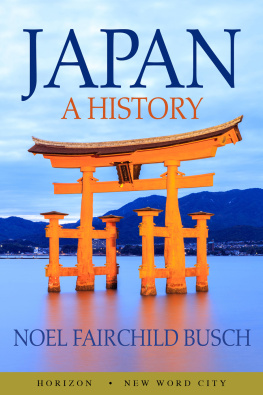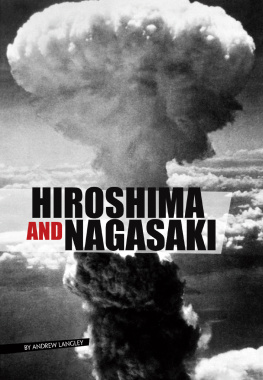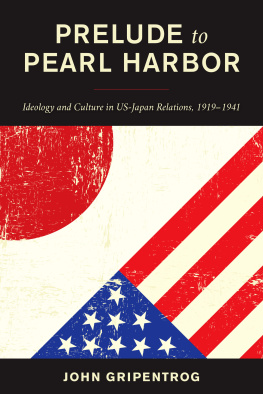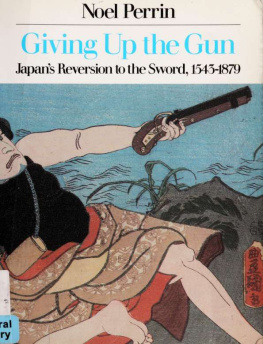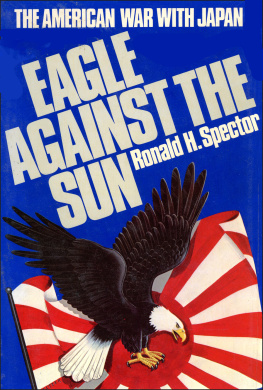Noel Fairchild Busch - Japan: A History
Here you can read online Noel Fairchild Busch - Japan: A History full text of the book (entire story) in english for free. Download pdf and epub, get meaning, cover and reviews about this ebook. year: 2017, publisher: New Word City, genre: Romance novel. Description of the work, (preface) as well as reviews are available. Best literature library LitArk.com created for fans of good reading and offers a wide selection of genres:
Romance novel
Science fiction
Adventure
Detective
Science
History
Home and family
Prose
Art
Politics
Computer
Non-fiction
Religion
Business
Children
Humor
Choose a favorite category and find really read worthwhile books. Enjoy immersion in the world of imagination, feel the emotions of the characters or learn something new for yourself, make an fascinating discovery.
- Book:Japan: A History
- Author:
- Publisher:New Word City
- Genre:
- Year:2017
- Rating:5 / 5
- Favourites:Add to favourites
- Your mark:
- 100
- 1
- 2
- 3
- 4
- 5
Japan: A History: summary, description and annotation
We offer to read an annotation, description, summary or preface (depends on what the author of the book "Japan: A History" wrote himself). If you haven't found the necessary information about the book — write in the comments, we will try to find it.
Japan: A History — read online for free the complete book (whole text) full work
Below is the text of the book, divided by pages. System saving the place of the last page read, allows you to conveniently read the book "Japan: A History" online for free, without having to search again every time where you left off. Put a bookmark, and you can go to the page where you finished reading at any time.
Font size:
Interval:
Bookmark:
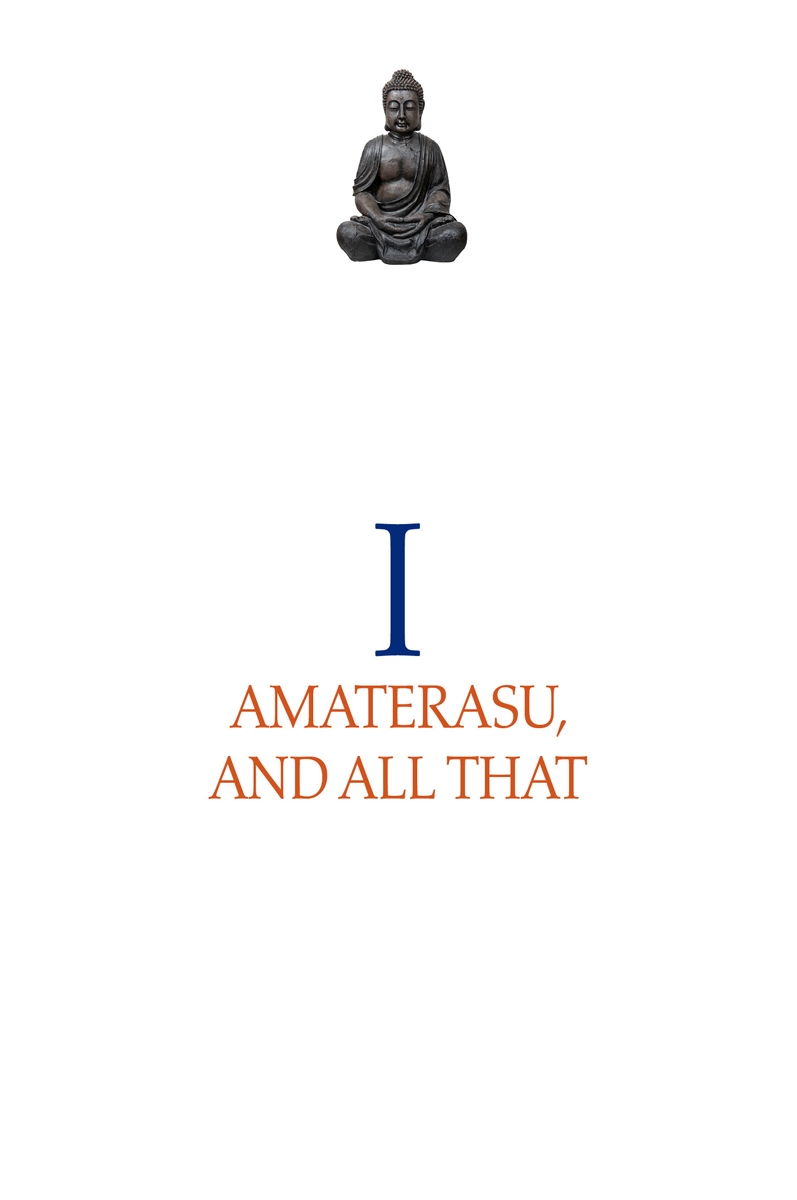
According to Japanese mythology, a celestial, brother-and-sister married couple named Izanagi and Izanami dipped a jeweled spear into the sea. Drops falling from the tip of the spear crystallized into the Japanese islands. Izanagi then produced the Sun Goddess, Amaterasu, from his left eye and the Moon God, Tsukiyomi, from his right one. In due course, the grandson of the former, Ninigi by name, came down to earth to supervise developments. Ninigis grandson, Jimmu Tenn, became emperor of Japan, and his descendants have reigned there ever since.
To complaints that the story sounded unrealistic, noted eighteenth-century Japanese scholar Motoori Norinaga provided a sharp answer: The improbability of the myth constituted the surest proof of its veracity; if anyone had invented the story, it would have been more plausible. The Japanese version of the Creation does seem to contain one or two elements that relate somewhat to actuality. To start with, the place where Ninigi is said to have descended was Mount Takachiho on the southernmost Japanese island of Kyushu. As a matter of historical fact, Kyushu is almost indubitably where the early Japanese put down their first roots.
Less reliable than the place is the time assigned to Ninigis visitation - 660 BCE according to Western chronology - but there is still indirect relevance to reality. Perhaps because so many Eastern civilizations - Egyptian, Indian, and Chinese, to mention only the biggest - so noticeably antedate that of Europe, Westerners are sometimes inclined to think that the most Eastern one of all must be the oldest. Actually, Japanese culture is all relatively recent; the main point is not how far it goes back but how fast it has come on. The date of 660 BCE , nonetheless, is much too recent to be credible.
Possibly the best place to start then may be a few billion years earlier, with geology. The entire Pacific Ocean basin is surrounded by a ring of fire composed of volcanoes. This volcanic ring - faulted stratifications liable to cause earthquakes - is actually shaped more like a gigantic arch, starting in Chile, proceeding up the western coast of the Americas to Alaska, and then bending southward through the Kuriles and the Japanese islands to the East Indies, where its renowned pedestal is Javas Krakatoa. Japan, near the apex of the arch, is one of the most precarious points, crowned by Mount Fuji.
Since Fuji is one of the most beautiful mountains in the world, it would have been understandable for Ninigi to have chosen its snow-covered cone as a landing spot - that he didnt suggests that few Japanese had yet reached it. Fuji is interesting less for its beauty than for its height. Usually given as 12,365 feet, it is one of the highest volcanoes in the world and one of the highest mountains in Japan. Only a few miles east of Fuji, the worlds biggest ocean reaches almost maximum profundity in the Tuscarora Deep - named for the American warship that first took five-mile soundings there.
According to current geological theory, this juxtaposition of deep-sea ocean trench and high, volcanic mountain top reveals the hazardous situation of the whole Japanese archipelago. Even more tangible and visible evidence is provided by non-lethal earthquakes occurring in Japan on an average of twenty a day, and by the numerous other active volcanoes, not to mention the countless hot springs. In fact, the whole chain of islands often seems to be vibrating, and newcomers wonder why the whole place does not blow up, break apart, or simply vanish in a puff of smoke.
To the Japanese, these subterranean peculiarities are so familiar they are generally ignored. A more direct influence on their national character and behavior than geology has been geography. The four major Japanese islands of Honshu, Kyushu, Shikoku, and Hokkaido form a good-sized (142,000 square-mile) temperate-zone cluster off the coast of the Eurasian land mass.
The Japanese islands present a total area almost devoid of any natural resources except for copious rainfall - unfortunately, often in the form of torrents or typhoons. Japan has two ranges of craggy mountains running north to south, dividing the east coast from the west and impeding centralization of government or anything else and precluding effective agriculture on all but some seventeen percent of the terrain.
Much of this arable scrap is contained in three small alluvial plains. In the largest of them, tucked into a little nook between Fuji and the Tuscarora Deep, is Tokyo. With only two agricultural areas, Japan must export goods to be able to import food for its over 125 million inhabitants.
Another geographical distinction of the Japanese islands is their distance from other inhabited lands. Kyushu is more than 100 miles off the coast of Korea, its closest neighbor. Because of this isolation, Japan was never successfully invaded and was seriously menaced only once prior to the year 1945.
The more forbidding nature of the water crossing between Japan and the Asian continent was not the only reason it was left alone. The Asian mainland held the huge and complacent Middle Kingdom of China that did not need or wish to be bothered with trifling offshore forays. The Japanese were never subjected to abrupt and compulsory changes in life style imposed by outsiders. Once the Japanese had subdued the aboriginal inhabitants of their islands, they freely adjusted to their unique surroundings according to their own inclinations.
And finally, the Japanese islands screen the whole east coast of Asia, a point of major significance. In the distant past, when blockades were uncalled-for and the only threat offered by the wide Pacific was the remote possibility of an attack by outrigger canoes from Hawaii, it was much less significant. The Japanese islands permanently and completely represented the last stop for all travelers headed east.
Assuming that man originated somewhere near the center of the Afro-Eurasian land mass, there may be some inherent psychological difference between the people who worked their way eastward and the ones who followed the sun toward the west. Although practical necessities dictated most major migrations, the westward ones may have been motivated by adventurous inquiry, while interest in origins and derivations may have inspired the ones heading east. Westerners often sense some element of innate traditionalism in Asian philosophy and religion that may be the result of exploration there or have inspired it in the first place.
In any event, Japans isolation might have caused the development of its unique characteristics. Still, though the Japanese differ in some respects from the rest of the world, they are, in most essentials, much the same.
While few historians since the time of Motoori have attempted to make a serious case for the Ninigi-Jimmu Tenn theory of Japans origin, none have yet produced an altogether satisfactory substitute. It is now thought that most of the earliest settlers of Kyushu arrived by sea from the southern tip of Korea. In the volume s of archeological evidence supporting this belief , one factor stands out to sufficient ly substantiate it. Some later arrivals brought bronze mirrors, straight swords, and jewels in the shape of a claw - three items still a part of the imperial regalia - that are identical to early counterparts found on the mainland. Yet the theory is not immune to one or two nagging objections.
One objection is that, if Tsushima Strait served to preclude later attempts at conquest, it seems odd that it did not also dissuade prehistoric migrants from making the passage in fairly large numbers. Part of the answer may be that some of the earliest arrivals were accidental ones; and also that, when the first settlers reached Kyushu from the mainland, there was practically no one there to keep them out. It seems probable too that the earliest migrants came across in small installments and at different times over a fairly long period.
Font size:
Interval:
Bookmark:
Similar books «Japan: A History»
Look at similar books to Japan: A History. We have selected literature similar in name and meaning in the hope of providing readers with more options to find new, interesting, not yet read works.
Discussion, reviews of the book Japan: A History and just readers' own opinions. Leave your comments, write what you think about the work, its meaning or the main characters. Specify what exactly you liked and what you didn't like, and why you think so.

